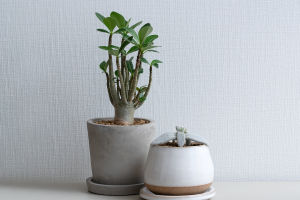Tulips are a favorite among flower enthusiasts for their vibrant colors and delicate petals. While they’re often seen in gardens, tulips can also thrive in pots, making them a great choice for indoor and outdoor displays.
Lykkers! If you're looking to cultivate these stunning flowers in pots, here's a complete guide to ensure success.
Choosing the Right Tulip Bulbs
Before planting, it's essential to pick the right tulip bulbs for your pots.
1. Opt for Quality Bulbs
Select large, healthy bulbs that are firm to the touch. Avoid bulbs that have soft spots, mold, or any signs of damage. Bigger bulbs generally produce stronger, more vibrant blooms.
2. Early, Mid, or Late Bloomers?
Tulips come in early, mid, and late-blooming varieties. For a longer display of flowers, consider planting a mix of all three types. This way, you’ll enjoy tulips in bloom for several weeks instead of all at once.
Preparing the Pots and Soil
The right pot and soil combination is crucial for successful tulip cultivation.
1. Choose a Well-Draining Pot
Tulips hate soggy soil, so it’s vital to use pots with good drainage. Make sure the pot has plenty of drainage holes to allow excess water to escape. The size of the pot should be deep enough to accommodate the tulip bulbs, typically around 6 to 8 inches deep.
2. Use High-Quality Potting Soil
Tulips prefer well-drained soil. Opt for a good-quality potting mix, ideally one with added sand or perlite to improve drainage. You can also mix in some compost or slow-release fertilizer to provide extra nutrients for the bulbs.
Planting the Tulip Bulbs
Proper planting is key to ensuring healthy tulip blooms.
1. Depth and Spacing
Plant the tulip bulbs pointed-side up, with the flat side down, at a depth of about 5 to 6 inches. Leave at least 1 to 2 inches of space between each bulb. Tulips grow best when they’re planted closer together in pots, which creates a fuller, more impressive display.
2. Watering After Planting
Once the bulbs are in place, water the soil thoroughly to help the bulbs settle in. However, make sure the water drains well and doesn’t sit at the bottom of the pot, as excessive moisture can lead to bulb rot.
Care and Maintenance for Potted Tulips
While tulips are relatively low-maintenance, they do require some care to thrive.
1. Sunlight Requirements
Tulips love the sun! Place your pots in a location where they’ll receive plenty of sunlight, ideally 6 to 8 hours a day. If you're keeping the tulips indoors, make sure they’re near a sunny window or in a spot that receives ample light.
2. Watering Tips
Water your tulips sparingly but consistently. Allow the soil to dry slightly between waterings. Avoid overwatering, as tulips are sensitive to soggy soil. Once the flowers begin to bloom, reduce watering, as tulips are more drought-tolerant during this period.
3. Fertilizing
For a healthy bloom, consider adding a slow-release fertilizer to the soil in early spring. Avoid using too much fertilizer, as it can encourage foliage growth at the expense of flowers.
With the right care and attention, potted tulips can bring vibrant color and joy to your home or garden. From selecting quality bulbs to ensuring proper drainage and sunlight, following these tips will help you cultivate a stunning display of tulips. Just remember to give them the right care and precautions, and you’ll enjoy a beautiful, long-lasting bloom each spring!


